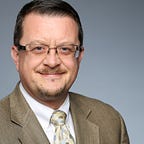Build Back Better: Innovative Steel Tech for Economic Recovery
As we reflect on the challenges of the last ten months, there is room for some cautious optimism as we turn the page on a period of economic slowdown. America’s structural steel industry is standing by to kick-start a plan for economic recovery with the same ingenuity and drive that has defined the country’s skylines for centuries.
New innovations in structural steel are creating new American jobs for thousands — innovations like SpeedCore, a non-proprietary, revolutionary composite steel core wall system that reduces the time and costs associated with constructing tall buildings.
A game-changing skyscraper will soon open in Seattle. Rainier Square Tower is a 58-story, 1.1M-sq.-ft mixed-use building. It’s also the first project to use SpeedCore — and those involved in its design and construction created enormous benefit for the building owner with this new technology. SpeedCore allowed the builders to erect the tower in just 10 months, ultimately reaching a speed of four floors each week! This cut 43% off the time it would have taken to construct it with a traditional concrete core. The reduction in time saved tens of millions in construction costs and will let the building’s tenants move in earlier than anticipated, therefore starting profits on rents and retail sales that much sooner.
In slower concrete core construction, the process waits for workers to build a level of formwork, assemble and install the reinforcing steel, and then place the concrete. And then the workers must wait again for that concrete to cure and be suitable for the process to repeat at the next level above. And the rest of the construction around the core waits, too.
SpeedCore, on the other hand, has prefabricated panels composed of two structural steel plates with cross-connecting tie rods. These panels are erected, connected, and filled with concrete. But there is no formwork to build, reinforcing steel to add, or curing to wait out. SpeedCore panels are configured to allow construction to continue up and concrete filling to follow below.
While SpeedCore is structurally unique and exciting for engineers and building owners, another added benefit of SpeedCore is its fire performance. Recently, research led by Amit Varma, Professor of Civil Engineering at Purdue University, and Michel Bruneau of the University at Buffalo, has found that SpeedCore panels demonstrate excellent fire resistance and do not require additional fire-protective coatings.
These innovations are real and useful today. 200 Park, a 19-story building with four levels of underground parking in San Jose, Calif., will be the next structure built using SpeedCore, followed by a project in Boston. The New York City Department of Buildings has approved the use of the steel technology in all five of its boroughs. And SpeedCore is also being added as an explicit system in the latest updates of our national design standards and building codes that reference them.
Incorporating new technology like SpeedCore into future design plans across the nation is a step in the right direction for the U.S. design community and construction industry. Every day, I see the people in our vibrant American structural steel industry working hard. They’re building the future of our nation faster, smarter, stronger, and more cleanly — in fact, some 93% of every new piece of structural steel is recycled steel. Today’s industry is creating a greener future with yesterday’s cars and refrigerators.
At AISC, we are confident that smart, modern construction techniques will be key in our economic recovery and our national advancement. Innovations like SpeedCore will result in job creation and massive savings on building projects that are essential to U.S. economic recovery as we work together to move America forward.
Charles J. Carter, SE, PE, PhD, is the president of the American Institute of Steel Construction, a non-partisan, not-for-profit technical institute and trade association established in 1921 to serve the structural steel design community and construction industry in the United States.
